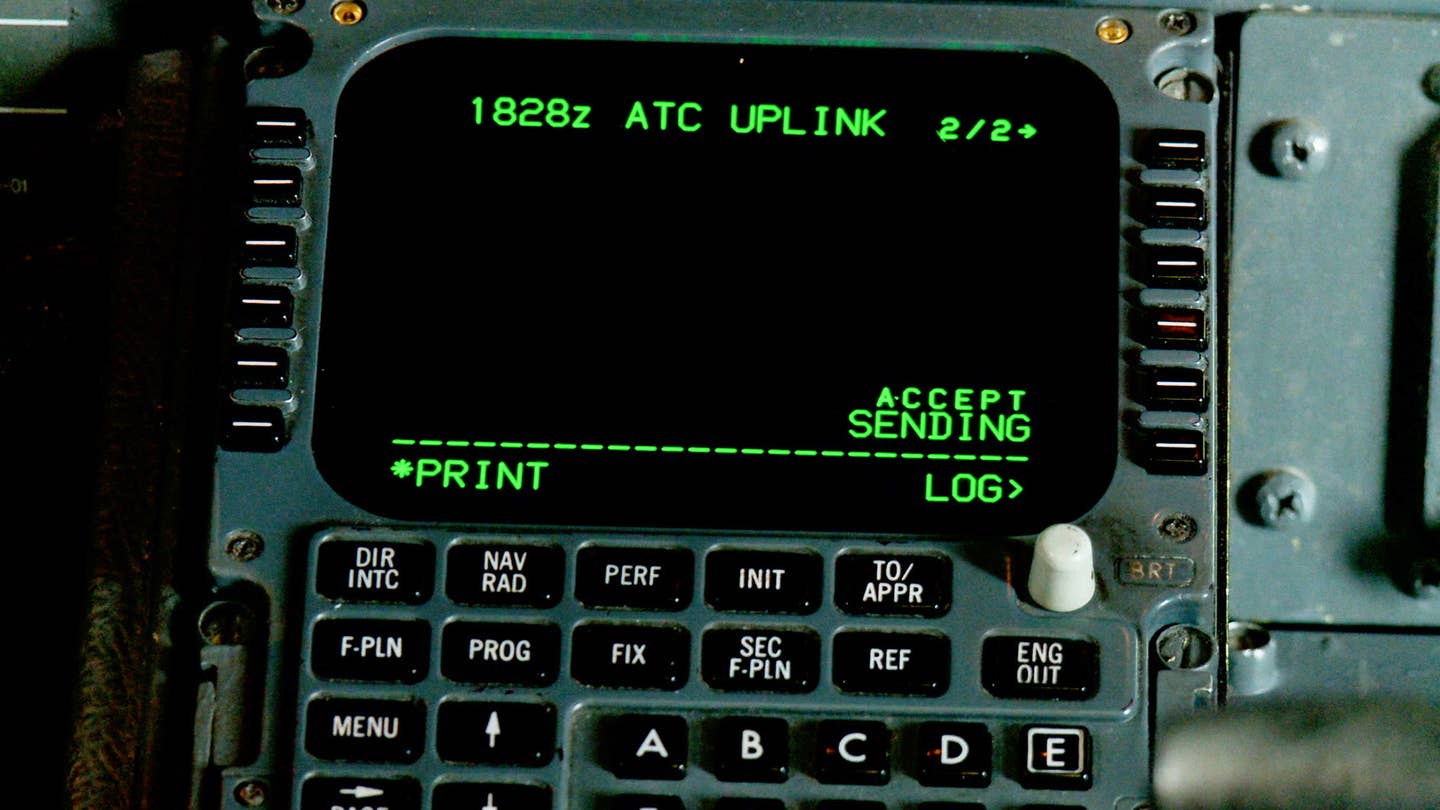
The CPDLC avionics panel in an equipped aircraft is where pilots communicate digitally with ATC using Data Comm Tower Services. FAA
When H.R.2115, the Vision 100 Century of Aviation Reauthorization Act, was signed into law in December 2003, it endorsed the concept of a Next Generation Air Transportation System (NextGen) to be developed by the Federal Aviation Administration (FAA). A month later, the DOT secretary announced plans for a new, multi-year, multi-agency effort to develop an air transportation system for the year 2025 and beyond that would increase efficiency in the National Airspace System (NAS). NextGen would not be just one technology or product, the bill stated, instead it was conceived to be a portfolio of innovative new technologies and airspace procedures to increase NAS system efficiency and capacity.
One of those “innovative new technologies” that was born out of H.R.2115 and is now in use at 62 U.S. airports is Data Comm Tower Service. With this technology, FAA is revolutionizing communications between air traffic controllers and pilots by replacing voice communication with digital tower-to-flight deck messaging that saves time and reduces miscommunications between controllers and pilots known as “talk back, read back” errors.
In order for a flight crew to utilize Data Comm, the aircraft must be equipped with Future Air Navigation System 1/A (FANS 1/A), which includes CPDLC and Automatic Dependent Surveillance-Contract (ADS-C) functionality. According to FAA’s NextGen Implementation Plan 2018–19, an incentive was initially offered to eight operators to equip with Data Comm avionics, resulting in 2,465 equipped aircraft. Now, approximately 6,000 aircraft are equipped overall, exceeding the FAA’s goal of 1,900 Data Comm-capable aircraft by 2019.
A joint FAA and industry analysis was performed at five airports in the NAS, looking at the first two months of the 2017 convective season, and the report revealed average taxi-out time savings between 0.2 and 8.5 minutes per rerouted flight by utilizing digital Data Comm communications. Over the lifecycle of the Data Comm program, FAA estimates more than $10 billion will be saved by operators, and approximately $1 billion saved in FAA operating costs.
An FAA spokesperson said that since first going operational in 2016, Data Comm Tower Services has saved 2.02 million minutes of radio communications time on 7.28 million flights, and that 111,000 possible talkback/readback errors have been prevented.
“The goals of our modernization program are to increase safety, efficiency, use of available capacity, access, flexibility, predictability and resilience of the NAS while reducing environmental impacts,” an FAA spokesperson said. “The infrastructure is complete, and the agency plans on finishing and integrating all major components by 2025. NextGen capabilities are operating in the NAS at every phase of flight. NextGen improvements yielded an estimated $6 billion in benefits from 2010 to 2018. Data Comm is a game-changer that provides the NAS with a whole new platform for innovation. The advent of a capability to uplink perfectly accurate instructions to an aircraft's Flight Management System (FMS) will transform air traffic management.”
The rollout of Data Comm tower services was originally planned for 55 U.S. airports, however, installation and testing for those airports came in “under budget and more than two-and-a-half years ahead of schedule,” according to FAA. Those budget savings enabled the deployment of Data Comm Tower Services at seven more airports than originally planned, at no additional cost, bringing the total to 62 U.S. airports.
A longer-range goal of the NextGen program is to provide en-route services using Data Comm. The FAA said, “The December 22, 2018, to January 25, 2019, lapse in appropriations adversely affected the enroute phase of the program, causing all site testing and training activities to stop. Due to the length of the lapse, site training activities had to be re-accomplished, and the entire deployment strategy had to be re-planned and deconflicted with other agency initiatives impacting the enroute facilities.” Functional verification testing of initial enroute services continued in 2019 at sites in Indianapolis and Kansas City.

Sign-up for newsletters & special offers!
Get the latest FLYING stories & special offers delivered directly to your inbox






